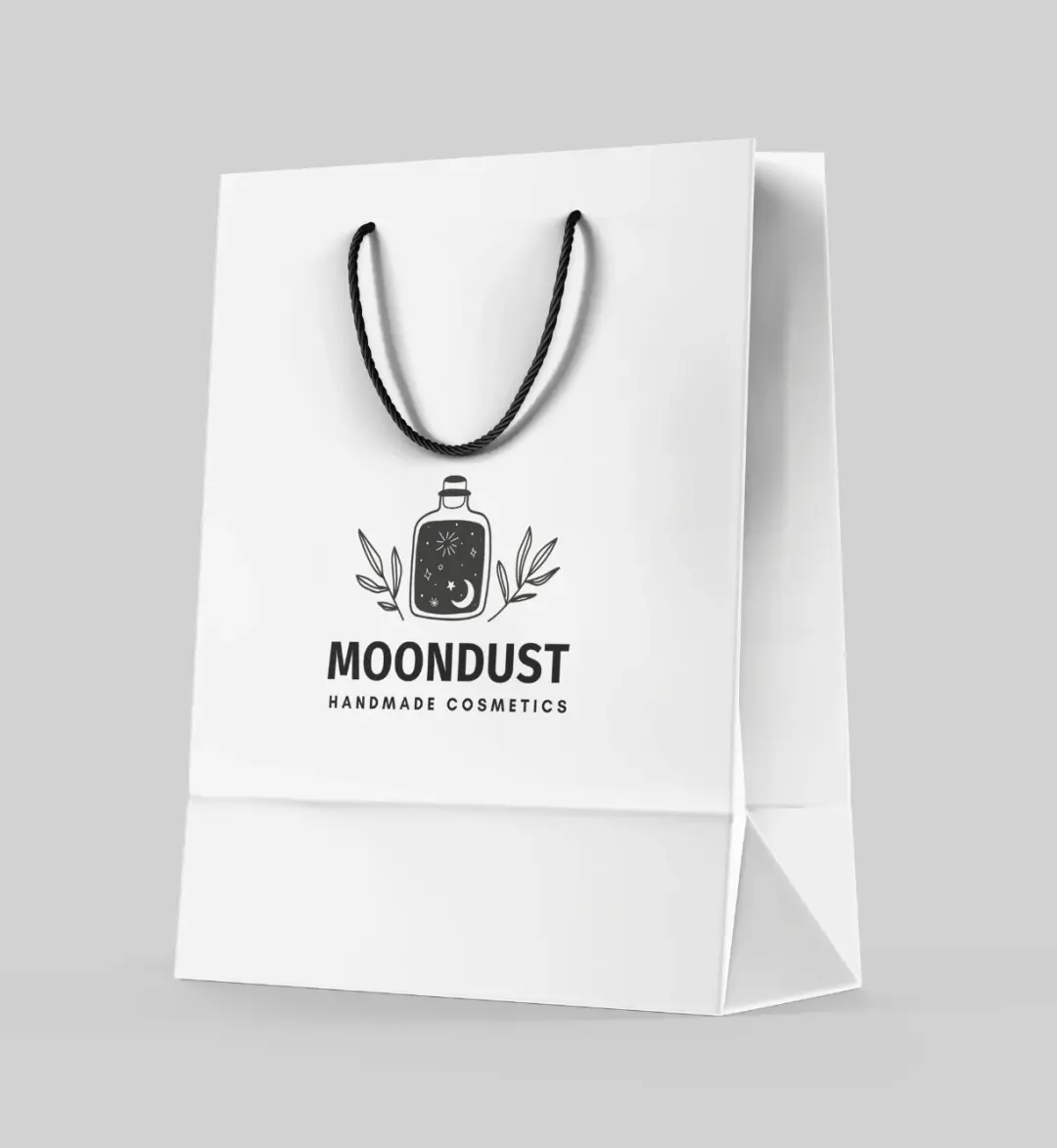In today’s eco-conscious market, businesses are increasingly adopting printed paper bags to showcase their commitment to sustainability while enhancing brand visibility. These bags offer a practical and visually appealing alternative to single-use plastic, providing companies with a unique way to leave a lasting impression on customers. Beyond environmental benefits, printed paper bags serve as a mobile billboard for brands, reinforcing identity with every use.
The trend is rapidly gaining momentum, as consumers actively seek eco-friendly packaging options that align with their values. Companies in retail, food, fashion, and lifestyle sectors are discovering that investing in printed paper bags not only reduces environmental impact but also strengthens customer loyalty and brand recall. This article explores the rising popularity, practical applications, design considerations, and business advantages of printed paper bags in the modern marketplace.
The Rise of Printed Paper Bags
Printed paper bags have evolved from a functional packaging solution to a powerful marketing tool. Several factors contribute to this growth:
- Environmental Awareness: Rising concerns about plastic pollution have made sustainable alternatives a priority.
- Regulatory Support: Governments worldwide encourage the use of biodegradable and recyclable packaging.
- Consumer Preference: Shoppers increasingly favor brands that demonstrate environmental responsibility.
- Visual Appeal: Customized prints, logos, and colors help brands stand out.
Businesses that adopt printed paper bags tap into a growing demand for eco-conscious solutions while simultaneously enhancing their brand presence.
Sustainability Meets Marketing
One of the primary benefits of printed paper bags is their ability to combine sustainability with marketing.
- Eco-Friendly Materials: Made from recycled or sustainably sourced paper, these bags minimize environmental impact.
- Reusable Nature: Sturdy construction ensures multiple uses, extending the bag’s life cycle.
- Brand Exposure: Every bag used by a customer acts as a walking advertisement, promoting brand awareness organically.
By choosing printed paper bags, companies not only reduce their carbon footprint but also amplify marketing efforts in a cost-effective manner.
Design Considerations for Printed Paper Bags
The impact of a printed paper bag heavily depends on design elements. Thoughtful design ensures the bag aligns with both sustainability goals and branding objectives.
Material Selection
- Kraft Paper: Strong, eco-friendly, and recyclable, ideal for sturdy bags.
- White Paper: Offers a clean canvas for vibrant prints and high-quality graphics.
- Recycled Paper: Promotes sustainability and demonstrates corporate responsibility.
Material choice influences durability, printing quality, and overall consumer perception.
Printing Techniques
- Offset Printing: Provides sharp, detailed images for high-quality branding.
- Flexographic Printing: Efficient for bulk production with fewer colors.
- Screen Printing: Ideal for textured designs or specialty inks.
Selecting the right printing technique ensures brand elements are clear, attractive, and consistent.
Size and Shape
- Standard Handles: Rope, twisted paper, or flat handles affect usability and aesthetics.
- Bag Dimensions: Tailored sizes accommodate different products, from small retail items to larger purchases.
- Custom Shapes: Unique shapes can enhance brand differentiation and customer experience.
Careful consideration of size and shape ensures functionality while reinforcing brand identity.
Applications Across Industries
Printed paper bags find versatile applications across various sectors:
- Retail and Fashion: High-end boutiques use branded paper bags to create a luxury feel.
- Food and Beverage: Cafes, restaurants, and bakeries package takeaway items sustainably.
- Events and Promotions: Trade shows and gift shops distribute promotional materials in customized bags.
- Corporate Gifting: Businesses use branded paper bags for giveaways, strengthening client relationships.
The adaptability of printed paper bags makes them suitable for nearly any industry that values sustainability and branding.
Consumer Perception and Engagement
Consumers increasingly view packaging as a reflection of brand values. Printed paper bags enhance engagement in several ways:
- Visual Identity: Attractive bags create a memorable unboxing experience.
- Social Sharing: Instagram-worthy packaging encourages customers to share on social media.
- Eco-Friendly Messaging: Demonstrates a brand’s commitment to sustainability, boosting reputation.
By providing aesthetically pleasing, sustainable bags, brands foster positive emotional connections with their audience.
Cost-Effectiveness and ROI
Investing in printed paper bags can be surprisingly cost-effective over time:
- Durable Material: Reduces the need for replacements.
- Reusable Marketing Tool: Each bag functions as a mini-billboard multiple times.
- Bulk Printing Savings: Economies of scale lower production costs per unit.
Brands often find that the marketing benefits and customer goodwill generated outweigh the initial investment, making printed paper bags a smart business decision.
Trends Shaping Printed Paper Bags
Several trends are driving innovation in printed paper bag design and usage:
- Minimalist Aesthetics: Clean, modern designs appeal to younger, eco-conscious consumers.
- Interactive Features: QR codes, augmented reality elements, or personalized messages engage users digitally.
- Seasonal and Limited Editions: Customized designs for holidays or special events create exclusivity.
- Collaborations: Partnerships between brands and artists yield unique, collectible designs.
Staying abreast of these trends allows companies to maintain a competitive edge in marketing and sustainability.
Best Practices for Businesses
To maximize the benefits of printed paper bags, businesses should consider these practices:
- Consistency in Branding: Align bag design with overall brand identity, including logo, colors, and typography.
- Sustainable Sourcing: Choose certified, recyclable, or compostable materials.
- Durability: Ensure bags are sturdy enough for repeated use to extend lifespan.
- Consumer Education: Include messages that encourage reuse and proper disposal.
These strategies ensure that printed paper bags provide both environmental and marketing advantages.
Challenges and Solutions
While printed paper bags offer many benefits, businesses may face challenges:
- Cost Concerns: Higher upfront costs compared to plastic can be mitigated through bulk printing and reuse.
- Durability Issues: Selecting high-quality materials and reinforced handles ensures reliability.
- Print Quality: Partnering with experienced printers guarantees consistent results.
Addressing these challenges effectively allows companies to enjoy the full advantages of printed paper bags without compromise.
Environmental Impact
Printed paper bags contribute significantly to environmental sustainability:
- Reduced Plastic Usage: Replaces harmful single-use plastics.
- Biodegradability: Breaks down naturally without leaving toxic residues.
- Recyclability: Can be recycled into new paper products, closing the loop in material use.
Businesses adopting printed paper bags demonstrate environmental stewardship, appealing to eco-conscious consumers and regulatory bodies.
Consumer Tips for Reuse
Customers can maximize the utility of printed paper bags in several ways:
- Use as storage for clothing, books, or household items.
- Repurpose for gift wrapping, adding decorative touches.
- Compost shredded paper for garden use.
- Upcycle for DIY projects, crafts, or creative displays.
Encouraging reuse enhances both sustainability and brand visibility, as customers carry the brand’s messaging repeatedly.
Future of Printed Paper Bags
The future of printed paper bags looks promising due to several factors:
- Technological Advancements: Innovative printing techniques and sustainable inks improve quality and visual appeal.
- Consumer Demand: Increased environmental consciousness drives higher adoption.
- Policy Support: Stricter regulations on single-use plastics encourage businesses to switch to paper alternatives.
- Creative Marketing: Integration of technology, personalization, and interactive design boosts engagement.
Brands that adapt early to these trends position themselves as leaders in both sustainability and marketing.
Conclusion
Printed paper bags have emerged as a vital tool for businesses seeking to merge sustainability with effective branding. They offer a versatile, eco-friendly alternative to plastic while enhancing customer engagement, brand visibility, and corporate responsibility. By thoughtfully considering material, design, and application, companies can maximize the benefits of printed paper bags, ensuring long-lasting impressions and promoting environmental stewardship. With growing consumer demand for sustainable packaging, printed paper bags are not just a trend—they are a strategic business choice that supports both ecological and marketing goals in the modern marketplace.
FAQs
What materials are commonly used for paper bags?
Kraft paper, recycled paper, and white paper are widely used for their durability and eco-friendliness.
Can printed paper bags be reused multiple times?
Yes, sturdy designs and reinforced handles allow for repeated use.
Are these bags suitable for heavy items?
High-quality bags with reinforced bases and handles can carry heavier items effectively.
How can businesses customize their bags?
Custom printing, logos, colors, and even unique shapes or handles can be incorporated.
Do printed paper bags help in marketing?
Yes, they act as mobile advertising, increasing brand visibility with every use.
Are these bags environmentally friendly?
Absolutely. They are biodegradable, recyclable, and often made from sustainably sourced paper.
Can consumers recycle these bags easily?
Yes, most printed paper bags can be placed in paper recycling bins after use.
Do printed paper bags cost more than plastic?
Initially, they may be higher in cost, but bulk printing and reuse offset expenses.
Are there any design trends for these bags?
Minimalist aesthetics, limited editions, interactive features, and collaborations are current trends.Can businesses use them for promotional events?
Yes, printed paper bags are ideal for giveaways, trade shows, and corporate gifting.

